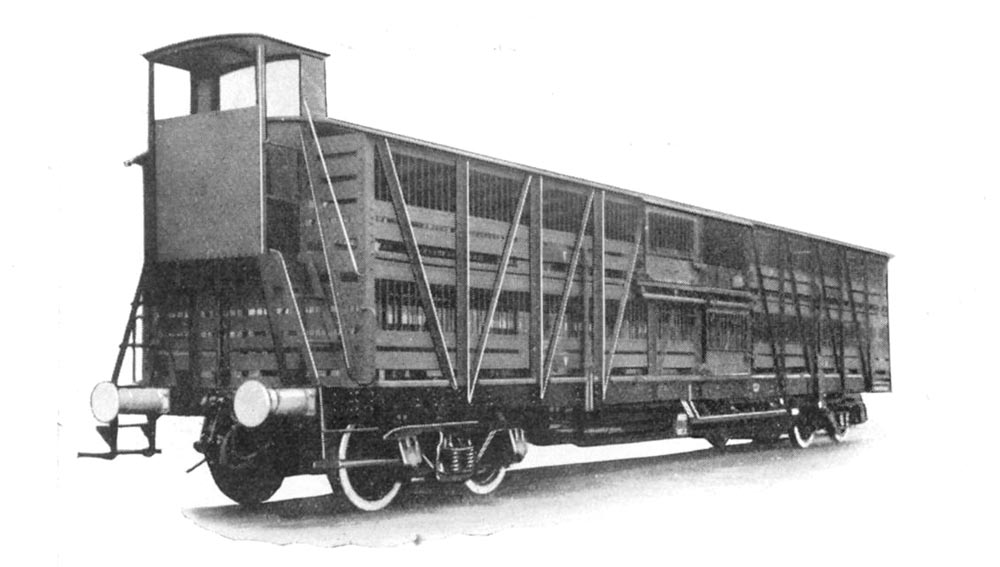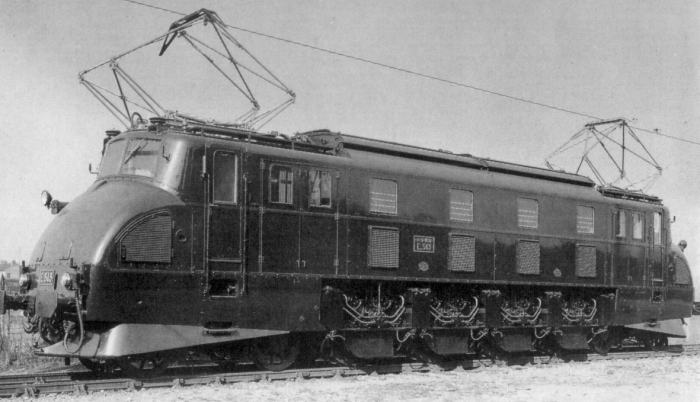Here's a basic outline of pre-existing diesel locomotives that would be present on the LNER at the time depicted on the planned layout, all locomotives follow on from Thompson's classification system and have plain fronts with four headcode lights. as information becomes available more classes will be added.
In 1950 the LNER management board decided that diesel and electric locomotives would require a separate numbering system, eventually they settled on the following for diesel locomotives:
D1-D999: under 800hp
D1000-D1999: 800hp-1000hp
D2000-D2999: 1001hp-1499hp
D3000-D3999: 1500hp-1999hp
D4000-D4999: 2000hp-2999hp
D5000-D6999: over 3000hp
Loco liveries are as follows :
shunting locomotives: black with red buffer beams, running board and side rods to aid visibility,
locomotives under 1500hp and freight locomotives: red-lined black (see EM1 and EM2).
locomotives over 1500hp: see DEE2
Frome 1960: loco green, with Buldogs being painted Garter Blue with red lining
Shunters (DES):
DES3 "Janus" (D8-D310)
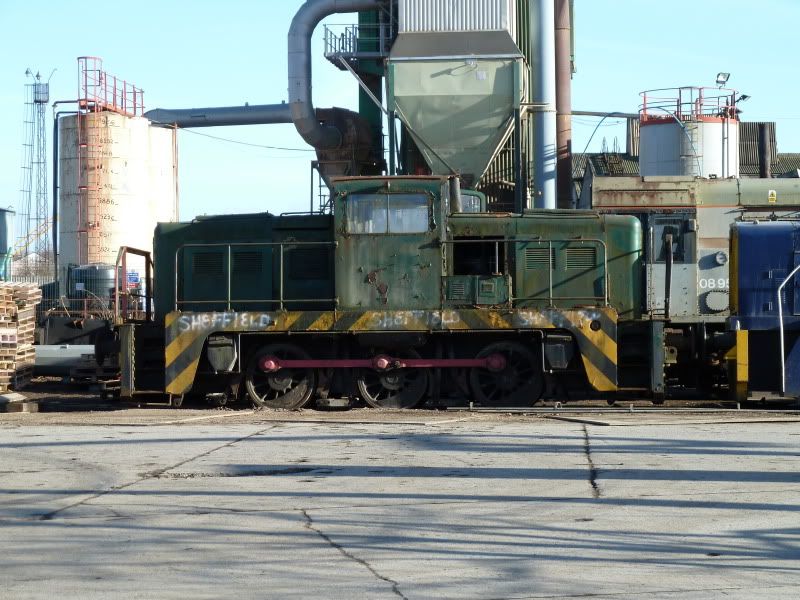
upon their construction by YEC, the LNER purchased one on a trial basis to shunt the yard at Froddingham, upon evaluation it was determined to be satisfactory to the LNER's needs and, following negotiations over 300 were built under licence using LNER standard components, the locos replaced the smaller 0-6-0 tender locos being used for shunting and trip working.
DES4 (D311-320)

Based on a standard Yorkshire Engine company design (pictured), these diminutive 0-4-0s were built to supplement the LNER-built Janus in smaller yards.
DES5 "Teddy Bear" (D321-D351)

The D95XX class "Teddy Bears" were a GWR design intended for trip workings in the south west, unfortunately by the late 1960s their intended work began to dry up and so they began to be sold on to industry or scrapped. Meanwhile with steam in decline the LNER found itself in need of some heavy-duty trip shunters to work pick up goods, trains from the coal fields and permanent way trains. So it arranged to purchase no less than 30 from the GWR and they were promptly sent, in convoy, to the LNER network. Having experience with Rolls Royce's engines the LNER took the decision to rebuild them with RR DV8TCEs (Turbocharged V8) and allocated them to various branchlines, LNER served collieries and as station pilots.
This is intended to someday be an experiment in recording my own sound files, and is inspired by 14,901, a locomotive owned by a person who I've been graciously hosted by on several occasions, and quite frankly I prefer the purr of a Rolls Royce to the burble of the standard engines:
https://www.youtube.com/watch?v=f_XszBG_E0E
Passenger Locomotives (DEE/DEP):
DEP1 "Baby Deltic" (D2000-D20249)
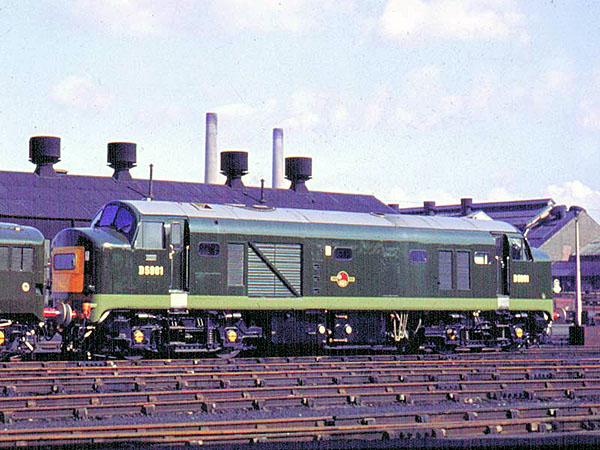
Designed for suburban and semi-fast trains, the DEP1 utalised an English Electric Napier-Deltic T9-29, which was a design of engine originally developed for marine and aviation use. Initially the locomotives suffered from weight issues, though this was later cured. The engine also had a number of issues such as an "above-average" rate of engine replacement, though again this as rectified with time and they became acceptably reliable. In the 1970s they underwent a major rebuild to lighten their design, and they were re-engined with EMD units, becoming class DEP1/2.
DEE1 "Bulldog" (D3000-D3024)
In 1947 the board of the LNER approved plans to construct 25 A1A-A1A diesel-electric locomotives of 1,600 horse power each to work in pairs on the principal Anglo-Scottish expresses, with one spare. Eventually GM-EMD was tasked with designing the locomotive to build under license, as EMD had much more experience producing reliable high powered engines capable of fitting into a locomotive than the equivalent british manufacturer did. The end result was in essence an EMD E-unit Co-Co with a smaller engine and reproportioned for the LNER loading gauge
DEE2 "Deltic" (D5000-D5069)

The DEE2 was developed as a solution to eliminate the requirement for using two DEE1s, following the trial of an experimental locomotive classified DP1 (Diesel Prototype 1) the Board of the LNER authorized the construction of 70 similar locomotives. Although they did indeed reduce the need for two DEE1 units their engines were highly sprung and costly to maintain, meaning their predecessors still saw regular use alongside them. Following their displacement from top link duties in the mid-80s they were refurbished with EMD power units, reclassified DEP2/2 and allocated to the Great Central.
Mixed traffic Locomotives (DEM):
DEM1 (D1000-D1149)
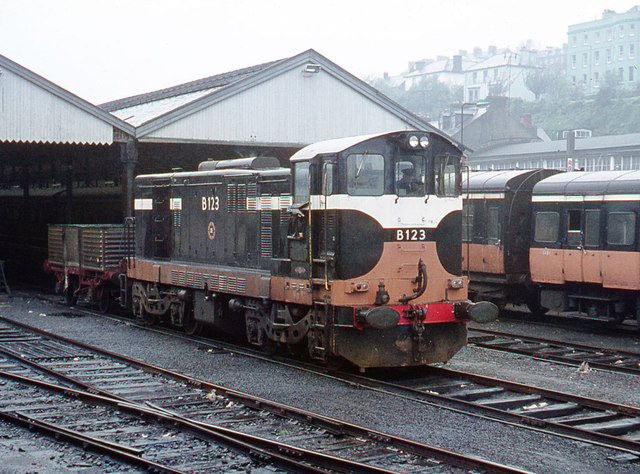
based on the EMD GL8, these fill the role of the BR class 20, being a single cab Bo-Bo of roughly 1000hp, but they display some deference from both locomotives. unlike the class 20 they're intended to work cab forward and unlike the GL8 they have reduced height cabs to fit in the LNER's loading Gauge, and the cab front is based on that of the LNER Tyneside electric units.
the body shell and bogie sides for a CIE 121 are available on shapeways, and should fit on a Bachmann class 20 chassis with a little modification:
https://www.shapeways.com/product/S3QTQ ... areProduct
DEM2 "Baby Bulldog" (D3025-D3324)

Following the success of the DEE1, the LNER decided to purchase a further 300 diesel electric locomotives based on the DEE1, but as standalone double cabbed versions to handle mixed traffic duties as replacement for classes such as the B1, they also differed mechanically from the DEE1s in being Co-Cos, rather than A1A-A1As.
DEM3 "Whistler" (D4000-D4399)

Though the most prestigious top link work on the ECML was covered by Bulldogs and Deltics, it still needed to provide a mixed traffic locomotive to handle the bulk of freight and work whilst electrification took place. Rather than order yet more DEM2s it was decided a larger locomotive was needed to fill in the role of steam classes such as the V2 and Thompson & Peppercorn's A2s, thus the board of the LNER, with the success of the Deltics, tasked English Electric to design and build a locomotive of 2000hp or more whilst maintaining a high route availability. in response English Electric built ten 2000hp 1-Co-Co-1s and delivered them to the Great Eastern for testing, following which the LNER ordered a further 390 with an increase in power to 2500hp to assist in maintaining heavy loads at speed and the original ten were subsequently re-engined to reflect this.
Freight locomotives (DEF):
DEF1 "Chopper" (D1150-D1377)
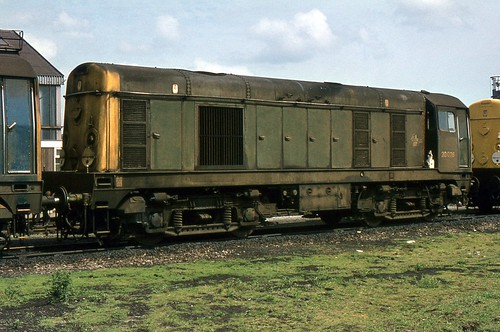
in addition to the DEM1 the LNER needed a diesel locomotive designed purely for frieght work to handle the work of 0-6-0 and 2-6-0 locomotives, for this they tasked English Electric with producing its own version of the DEM1. what resulted was the above single cab Bo-Bo. The distinctive beat of their engine earned them the nickname "chopper".
A number of these locomotives were actually mixed traffic locomotives, allocated to branchlines, most notably on the West Highland line, and classified as DEF1/2, they had tablet catchers and were fitted with air and vacuum brakes.
engine number D1175 will be the first example I do, as the BR equivalent, 20 026, was a resident to Frodingham shed, or it was there often enough to get photographed.
DEF2 "Tractor" (D3325-D3624)
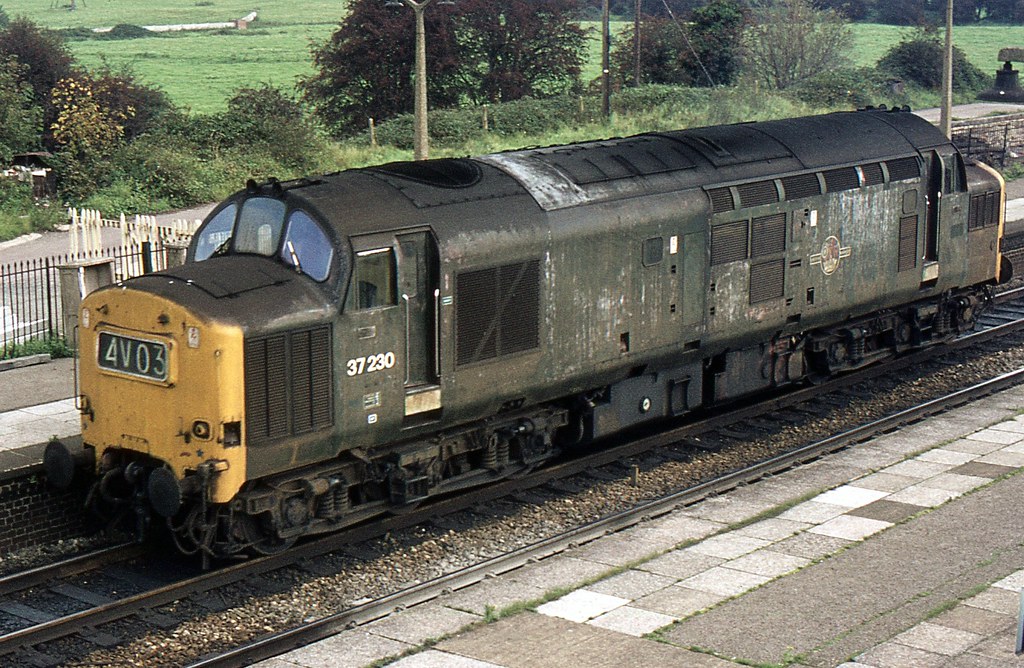
In addition to the DEF1 the LNER ordered 300 EE Co-Co diesel-electrics to bulk up the mixed traffic roster
the first example I do of this class will be another supposed Frodingham engine, this time D3355, IRL 37 031. this initial model will simply be a repaint of a center headcode 37 with the running number in the headcode boxes. however for subsequent models I will be butchering the bodyshell from an original condition class 40 with lamp-codes to make resin casts on the nose-fronts (cannibalised with the bufferbeam of a 37 with the fairing around the bottom) to make an English Electric type 3 that is unique compared to the class 37
None of the images are my own
